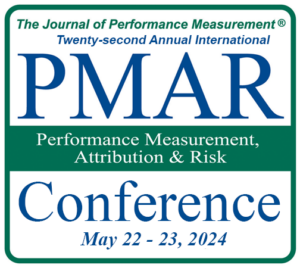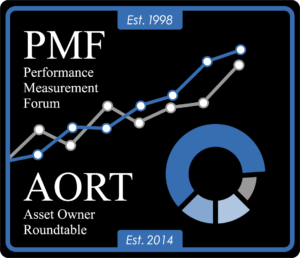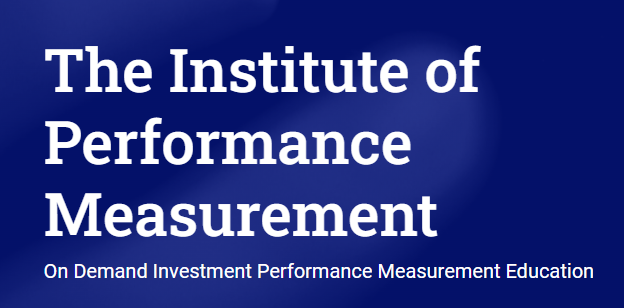Issue Contents
Unraveling the Debate: Time-weighted vs. Money-weighted Returns
In the dynamic world of investment management, the debate between time-weighted returns (TWRR) and money-weighted returns (MWRR) has been ongoing for decades. David Spaulding, the founder and CEO of TSG and a respected authority in the field, challenges the prevailing notion that TWRR is the only way to measure performance.
Historical Context: A Clash of Standards
The roots of this debate trace back to the late 1960s when the Internal Rate of Return (IRR) faced criticism from Peter Dietz. Subsequently, various standards bodies, such as the Bank Administration Institute (BAI) and the Investment Counsel Association of America (ICAA), introduced performance calculation standards that referenced time-weighting. Over the years, TWRR gained widespread acceptance, but Spaulding questions the notion that money-weighting is obsolete.
Understanding the Basics: TWRR vs. MWRR
Time-weighting primarily measures the return of the manager, eliminating the impact of external cash flows. On the other hand, money-weighting measures the return of the entire portfolio, considering the impact of both external and internal cash flows. The crucial question to ask is, “Who controls the cash flows?”
Real-World Scenarios: When MWRR Shines
There are compelling scenarios where MWRR proves to be a valuable metric. One such example involves personal rates of return for individual investors in mutual funds. TWRR may mask the impact of timing on cash flows, whereas MWRR, or IRR, provides a more accurate reflection of individual portfolio performance.
Institutional and Sub-Portfolio Considerations
Institutions, such as pension funds, have control over cash flows and asset allocation decisions. In these cases, we advocate for MWRR, emphasizing the importance of capturing the true impact of internal cash flows. Similarly, for sub-portfolios managed by investment managers, where internal cash flows are under the manager’s control, MWRR becomes the preferable measure.
Navigating Retail Investments: MWRR for Clarity
The retail market introduces non-discretionary client accounts where both cash flows and investment decisions are controlled by the client. In these cases, MWRR is a more intuitive metric, and reduces the confusion in volatile markets and provides clients with a clearer understanding of their true returns.
Conclusion: A Call for Nuanced Measurement
In conclusion, we challenge the prevailing belief that time-weighted returns are the industry standard. We encourage professionals to consider the nuances of each scenario, asking crucial questions about cash flow control and the true focus of measurement. As the debate between TWRR and MWRR continues, it’s clear that a nuanced understanding of both metrics can lead to more informed investment decisions.
For more details, please review, “Contrasting Time- and Money-weighted Returns: When Each Should be Used” by David Spaulding, DPS, CIPM, TSG, Inc.
Have an opinion? Please share it with Patrick Fowler.
Quote of the Month
“I do not know what I may appear to the world, but to myself I seem to have been only a boy playing on the sea shore, and diverting myself now and then finding a smoother pebble or a prettier sea shell than ordinary, whilst the great ocean of truth lay all undiscovered before me.”
– Isaac Newton
GIPS® Tips

The Journal of Performance Measurement®
This month’s featured article, “Investment Performance is a Data Management Challenge” by Laurie Hesketh of Meradia, was published in volume 28, issue #1 of The Journal of Performance Measurement. You can access this article by subscribing (for free) to The Journal. To confirm your email address, click the graphic below. If you’re a subscriber but haven’t received a link the the current issue, please reach out to Doug Spaulding at DougSpaulding@TSGperformance.com.
Article synopsis: Investment Performance transformation projects are notoriously difficult. Why? Investment Performance is, at its core, an enterprise data function in disguise. Its role in enterprise data management is so prevalent that the maturity with which a firm’s Investment Performance function manages this data functions is typically a bellwether for the operational efficiency of the firm generally. Performance and analytics, done well, consume an astounding array of internal, external sources and often a combination of the two. In addition, you’ll be hard pressed to find any department in the firm that doesn’t want to consume its outputs and scrutinize its conclusions. Investment Performance transformations are difficult because they necessarily require evolution for the firm’s enterprise data assets and can impact nearly every department.
The term Performance Book of Record, (PBOR) has become a popular way to reference the Investment Performance dataset. But many don’t really understand its import from a data standpoint. A Performance Book of Record, PBOR is a superset of all the data that enables performance analysts to answer the tough questions of lineage, explain small differences across accounting basis (ABOR vs IBOR for example), and uncover the true sources of alpha for a given strategy. Doing so forces it to tackle normalization, cleansing, and filling important gaps that make each organization unique.
ATTN: TSG Verification Clients
Can discretion be dynamic?
Yes! There are two reasons why an account may move from discretion to non-discretion, or vice versa:
The client introduces a change. As an aside, starting in 2020, in certain cases, changes to a client’s investment mandate, objective, or strategy could be initiated by the asset manager.
As the result of a change in the way a strategy is carried out, a previously nondiscretionary (discretionary) account is now discretionary (nondiscretionary).
Reminder: If you have not scheduled your verification for 2024, please contact Chris Spaulding to get dates on the calendar.
Unraveling the Debate: Time-weighted vs. Money-weighted Returns
In the dynamic world of investment management, the debate between time-weighted returns (TWRR) and money-weighted returns (MWRR) has been ongoing for decades. David Spaulding, the founder and CEO of TSG and a respected authority in the field, challenges the prevailing notion that TWRR is the only way to measure performance.
Historical Context: A Clash of Standards
The roots of this debate trace back to the late 1960s when the Internal Rate of Return (IRR) faced criticism from Peter Dietz. Subsequently, various standards bodies, such as the Bank Administration Institute (BAI) and the Investment Counsel Association of America (ICAA), introduced performance calculation standards that referenced time-weighting. Over the years, TWRR gained widespread acceptance, but Spaulding questions the notion that money-weighting is obsolete.
Understanding the Basics: TWRR vs. MWRR
Time-weighting primarily measures the return of the manager, eliminating the impact of external cash flows. On the other hand, money-weighting measures the return of the entire portfolio, considering the impact of both external and internal cash flows. The crucial question to ask is, “Who controls the cash flows?”
Real-World Scenarios: When MWRR Shines
There are compelling scenarios where MWRR proves to be a valuable metric. One such example involves personal rates of return for individual investors in mutual funds. TWRR may mask the impact of timing on cash flows, whereas MWRR, or IRR, provides a more accurate reflection of individual portfolio performance.
Institutional and Sub-Portfolio Considerations
Institutions, such as pension funds, have control over cash flows and asset allocation decisions. In these cases, we advocate for MWRR, emphasizing the importance of capturing the true impact of internal cash flows. Similarly, for sub-portfolios managed by investment managers, where internal cash flows are under the manager’s control, MWRR becomes the preferable measure.
Navigating Retail Investments: MWRR for Clarity
The retail market introduces non-discretionary client accounts where both cash flows and investment decisions are controlled by the client. In these cases, MWRR is a more intuitive metric, and reduces the confusion in volatile markets and provides clients with a clearer understanding of their true returns.
Conclusion: A Call for Nuanced Measurement
In conclusion, we challenge the prevailing belief that time-weighted returns are the industry standard. We encourage professionals to consider the nuances of each scenario, asking crucial questions about cash flow control and the true focus of measurement. As the debate between TWRR and MWRR continues, it’s clear that a nuanced understanding of both metrics can lead to more informed investment decisions.
For more details, please review, “Contrasting Time- and Money-weighted Returns: When Each Should be Used” by David Spaulding, DPS, CIPM, TSG, Inc.
Have an opinion? Please share it with Patrick Fowler.
Industry Dates and Conferences
2024 EVENTS CALENDAR
- May 21 – Women in Performance Measurement Meeting – New Brunswick, NJ
- May 22-23 – Performance Measurement, Attribution, and Risk Conference (PMAR) – New Brunswick, NJ
- June 12 – Spring Meeting of the Asset Owner Roundtable (AORT) – Las Vegas, NV
- June 13-14 – Spring North American Meeting of the Performance Measurement Forum – Las Vegas, NV
- June 27-28 – Spring EMEA Meeting of the Performance Measurement Forum – Athens, Greece
- November 7-8 – Autumn EMEA Meeting of the Performance Measurement Forum – Barcelona, Spain
- November 20 – Fall Meeting of the Asset Owner Roundtable (AORT) – Charleston, SC
- November 21-22 – Fall North American Meeting of the Performance Measurement Forum – Charleston, SC
For information on the 2024 events, please contact
Patrick Fowler at 732-873-5700.
- Artificial Intelligence and Risk: Should We Be Concerned?
- What’s Missing from Your Equity Attribution Report?
- ESG: Risk, Compliance, and Regulatory Reporting – Why Having the Right Data and Tools is Essential
- How are the New SEC Guidelines Being Practically Implemented and Applied?
- What to Know About the New GIPS® Guidance for OCIOs
- Essential Skillsets of the Performance Professional
- Methods and Styles of Reporting
- Benchmark Misfit
- Paths to a “Rich” Life
- How to Calculate Returns on Options, Futures, and Swaps
- The Reports of After-Tax’s Death Have Been Greatly Exaggerated: Use Cases and Implementation
GIPS® is a registered trademark owned by CFA Institute. CFA Institute does not endorse or promote this organization, nor does it warrant the accuracy or quality of the content contained herein.
Question 2: Do you agree with the use of a Required OCIO Composite structure?
While we think this structure should be recommended to enhance comparability across OCIO strategies, we believe requiring a composite structure is not consistent with the general GIPS guidance on composite construction for firms. Why should there be a required structure for this type of manager when there isn’t one for other types of managers? (And, we would not encourage that there should be). We believe that composites should reflect what is most meaningful to prospective clients about how the firm defines its own strategies and composites. We would hope this guidance statement would be similar to the prior Guidance Statement on Composite Definition from January 1, 2011, and more recently in the guidance for Provision 3.A.5 where CFA Institute provides a suggested hierarchy and constraints/guidelines for defining OCIO strategy composites.
We believe this required composite structure may decrease compliance in the OCIO space and may also constrict the innovation of OCIO strategies. We are concerned that firms will find this structure too prescriptive and not reflective of their actual strategies, which will lead to a scenario where firms create and maintain two sets of composites, one that the firm is required to create to be compliant and one that reflects the firm’s actual strategies and marketing efforts. Additionally, we believe smaller firms will find all of this too burdensome to warrant compliance with the GIPS standards.
We therefore ask that the composite structure be a recommendation, not a requirement.
TSG Milestones
Welcome New Members to the Performance Measurement Forum
The Performance Measurement Forum has met 103 times over the past 25 years and we celebrate and recognize the newest members of the group.
- Diamond Hill
- Generali Investments
- Clearwater
- International Monetary Fund
- Factset
- Opus Investments
- Wasatch
- American Century
The Performance Measurement Forum and Asset Owner Roundtable are interactive networking and practical information exchanges where performance measurement professionals examine important topics in an atmosphere conducive to dialogue, knowledge sharing, and networking. Members engage with global industry leaders to explore a variety of performance and risk topics, implementation strategies, management challenges, and policy solutions that directly apply and influence their proficiencies and effectiveness.
These one-of-a-kind learning and information exchange environments provide the capabilities and resources to give today’s performance measurement professionals the knowledge necessary to benefit themselves and their organizations.
That’s a Good Question
Attached is our marketing deck for our strategy. This strategy was verified and is GIPS compliant for several years, and the returns were verified last year. For this strategy, my PM was thinking about replacing the NASDAQ composite benchmark with the S&P 500 benchmark going forward. Are there any rules or regulations from GIPS (or any other regulatory body you know about) that would prevent you from changing the benchmark? We also want to understand how GIPS views benchmark changes and whether it is common for managers (or if you have seen) to change benchmarks for a strategy. Also, would this be an issue during the next verification?
Answer:
I think both the regulator and the GIPS standards would agree that the benchmark align with the strategy. In some instances, it may be difficult to find an appropriate index. Your document references “growth,” which would suggest that NASDAQ would be a better choice than the S&P 500, which is half value. But, perhaps you’ve done other analysis to determine that the securities you select would be better represented by this broader index.
The GIPS standards permit either a retroactive or prospective change. When this occurs, we often hear that the client found an index that they feel better represents the strategy. They will document this within their P&P. We would think you’d want to do this, should a change occur.
What is not looked favorably upon, of course, is a change to a benchmark that you beat more often than the old one.
I suggest you understand your PM’s rationale behind wanting the change. If it seems reasonable, and one that wouldn’t cause regulatory scrutiny (which I understand is difficult to assess), then the change is likely warranted. The question then is do you do it historically or only on a going forward basis. If only going forward, has the strategy changed such that now the S&P 500 is a better fit?
In this section we will collect question submissions and our team’s response to them. Please submit any questions to Patrick Fowler.
Compliance Corner
SEC Marketing Rule: Yield
The SEC’s marketing rule, Rule 206-4(1) (the “Marketing Rule”) sets forth specific requirements with respect to the presentation of “performance.” Unfortunately, it is not always clear whether certain metrics that have performance-related characteristics, such as yield, should be treated as “performance” under the Marketing Rule. Depending on the context, the presentation of yield information could be: (i) performance (triggering the performance presentation requirements of the Marketing Rule); (ii) a portfolio characteristic (which would not implicate the Marketing Rule’s performance presentation requirements); or (iii) both. While members of the SEC staff have discussed this ambiguity at industry conferences as well as privately, a uniform view on the presentation of yield in advertisements has not been formally articulated.
From a practical perspective, the presentation of the actual yield of an account or composite is most likely to be treated as performance because it typically purports to illustrate to the recipient the amount of income that the strategy has generated and, by implication, is anticipated to generate. On the other hand, the yield of an individual investment (e.g., the yield of a specific bond) could reasonably be viewed as a characteristic of that investment, particularly when presented together in a table with other portfolio characteristic metrics relating to the same investment, such as issue price and maturity.
In between those ends of the spectrum, the determination is most likely going to be controlled by the intended use of the information in the presentation and the overall facts and circumstances. For example, showing the “average yield of investments” in a portfolio as part of a risk presentation suggests that the information is intended as a characteristic, while showing the yield of the portfolio as a whole is suggestive of the portfolio’s investment performance — and therefore “performance” under the Marketing Rule. As another example, the presentation of the yield of an individual investment could (as noted above) be considered a characteristic of that investment, but depending on the context, the yield presentation could also be “extracted performance”, triggering the application of the performance requirements in the Marketing Rule.
Given this ambiguity, we believe the best practice is to review the types of information that will be included in marketing materials and make an advance (and documented) determination as to whether the metric is intended as “performance” or a “characteristic”. A firm could determine that the yield of a given bond is a “characteristic” of the bond because it is intended to show something about the types of investments in a portfolio rather than a portfolio’s ability to generate income. Materials that present yield as a “characteristic” should be presented in a way that aligns with this conclusion (e.g., included under a “Risk Metrics” (or similar) header) and accompanied by disclosure noting that the information is not intended as reflective of the performance of an investment or strategy). In addition, any such presentations should be preceded by a complete and compliant performance presentation (including gross and net performance figures over the appropriate time periods).
Given the recognized ambiguity with respect to yield, there is the potential that SEC staff could view a given presentation of yield to be performance, even where a firm intends it to show characteristics, but contemporaneously documenting a reasonable internal determination, along with appropriate disclosures, should mitigate the risk of a significant regulatory issue in the absence of express guidance from the SEC staff to the contrary.
Special thanks to Lance Dial and Pamela Grosetti from K&L Gates who provided the content for this section.
More From the SEC
The staff of the Division of Investment Management has prepared the following responses to questions related to the adoption of amendments to rule 206(4)-1 under the Investment Advisers Act of 1940 in December 2020. The staff expects to update this document from time to time to include responses to additional questions. These responses represent the views of the staff of the Division of Investment Management. They are not a rule, regulation, or statement of the Securities and Exchange Commission (the “Commission”). The Commission has neither approved nor disapproved these FAQs or the answers to these FAQs. The FAQs, like all staff guidance, have no legal force or effect: they do not alter or amend applicable law, and they create no new or additional obligations for any person.
https://www.sec.gov/investment/marketing-faq
The adopting release for the amendments to rule 206(4)-1 is available at https://www.sec.gov/rules/final/2020/ia-5653.pdf. If you have questions about the application of these rules, please contact the Division of Investment Management Chief Counsel’s Office at 202-551-6825 or IMOCC@sec.gov.
Potpourri
One thing that is often overlooked is that William F. Sharpe, PhD, in his paper that introduced the now eponymously named “Sharpe ratio,” referred to his measure as “reward to variability.” He contrasted this with Jack Treynor’s earlier published method, which he labeled “reward to volatility.” The only difference between the measures was what they chose to use for risk. Treynor went with beta, while Sharpe selected standard deviation. And so, Sharpe saw standard deviation as a measure of variability (and by default, beta as a measure of volatility). He has since acknowledged that it is also a measure of volatility. But for now, let’s focus on the measure as a measure of variability.
Standard deviation as a measure of variability
Standard deviation as a measure of variability was addressed quite well by Brian Portnoy in his excellent new book, The Geometry of Wealth. Brian’s point: as we increase risk, we, in turn, increase the potential variability of the resulting returns. He disputes the notion that taking on more risk results in higher returns; no, what it results in is higher dispersion of potential results!
Standard deviation as a risk measure
Standard deviation is frequently criticized as a risk measure because we typically see it as a measure of volatility, and what does volatility have to do with risk? By changing our focus, and thinking of it as a measure of variability, perhaps we can see how it can provide some additional insights from a risk perspective.

PUZZLE TIME

Here’s this month’s puzzle; solution in the next issue!
- Solve this equation:
24/6*(4-2)
-
Last month’s puzzle and solution.
- I bought a cow for $800
- I sold it for $1,000
- I bought the cow again for $1,100
- I then sold the cow again for $1,300; How much money did I earn?
The Answer is $400
Correct Answer Respondents:
- Michael Margulis
- Matthew Lyberg, CFA
- William Little
- Anthony Howland
Please submit your puzzle solution or puzzle ideas to Patrick Fowler.
Upcoming Webinars / Surveys
TSG will announce their 2024 webinar series shortly.
We will also be launching one of our most requested surveys dedicated to the investment performance professional. This global survey helps draw a portrait of the typical performance measurement professional and includes the following topics:
- What are the duties of the average performance measurement professional?
- How much education do they have?
- How much do they earn (Bonus and Salary)?
Institute / Training
Access All of TSG’s Online Performance, Attribution, Risk, and Python Content
With One Multi-Pass
Book Review
The Sense of Style, by Steven Pinker
Review by David D. Spaulding, DPS, CIPM
 At first glance, you might think the book has something to do with clothing or appearance; but that would be incorrect. The subtitle lets us know what it’s all about: “the THINKING PERSON’S GUIDE to WRITING in the 21st CENTURY!” <emphasis in the original>
At first glance, you might think the book has something to do with clothing or appearance; but that would be incorrect. The subtitle lets us know what it’s all about: “the THINKING PERSON’S GUIDE to WRITING in the 21st CENTURY!” <emphasis in the original>
If you’re going to read a book on writing, you sure want it to be well written, and this one is. The author mixes in some humor, which can help with any non-fiction book (and probably novels, too), but especially one on writing and grammar. Maybe you won’t chuckle as I did, but here are a few examples:
“Another insult to punctuational punctiliousness is the use of quotation marks for emphasis.”
As a pedant, I found a response to the following question from a dating agency funny:
“Describe yourself in 50 words or less.”
“It’s 50 words or FEWER actually. Less is used for non-countable quantities, collective amounts or degrees. Fewer means ‘not as many.’ The terms are NOT interchangeable.” <emphasis in original.”
He captions this with “The dating agency found no matches.”
“Some quantifiers are choosy as to which they apply to. We can talk about many pebbles but not much pebbles, much gravel but not many gravel. Some quantifiers are not choosy: We can talk about more pebbles and more gravel.” <emphasis in original>
Pinker is quite comfortable challenging historical grammar “rules” many of us have encountered. Examples:
“No discussion of the illogic of punctuation would be complete without the infamous case of the ordering of a quotation mark with respect to a comma or period. The rule in American publications (the British are more sensible about this) is that when quoted material appears at the end of a phrase or sentence, the closing quotation mark goes outside the comma or period, ‘like this,’ rather than inside, ‘like this’. The practice is patently illogical.” <emphasis added> For what it’s worth, I agree with Mr. Pinker.
“Uniqueness, the purists say, is like marriage or pregnancy [you can’t be a little married or pregnant]: something is either unique (one of a kind) or not unique, so referring to degrees of uniqueness is meaningless. Nor can one sensibly modify absolute, certain, complete, equal, eternal, perfect or the same…A glance at the facts of usage immediately sets off Klaxon horns. Great writers have been modifying absolute adjectives for centuries, including the framers of the American Constitution, who sought a more perfect union. Many of the examples pass unnoticed by careful writers and approved by large majorities of the [American Heritage Dictionary] Usage Panel, including nothing could be more certain, there could be no more perfect spot, and a more equal allocation of resources.” <emphasis in original> He goes on to cite Martin Luther King’s “I am in the rather unique position of being the son, the grandson, and the great grandson of preachers,” as well as several others.
“What does it mean to say that it is incorrect to end a sentence with a preposition, or to use decimate to mean ‘destroy most of’ rather than ‘destroy a tenth of’? After all, these are not logical truths that one could prove like theorems, nor are they scientific discoveries one could make in the lab.”
He shares a short story by the writer, Lawrence Bush.*
I had only just arrived at the club when I bumped into Roger. After we had exchanged a few pleasantries, he lowered his voice and asked, “What do you think of Martha and I as a potential twosome?”
“That,” I replied, “would be a mistake. Martha and me is more like it.”
“You’re interested in Martha?”
“I’m interested in clear communication.”
“Fair enough,” he agreed. “May the best man win.” Then he sighed. “Here I thought we had a clear path to becoming a very unique couple.”
“You couldn’t be a very unique couple, Roger.”
“Oh? And why is that?”
“Martha couldn’t be a little pregnant, could she?”
“Say what? You think that Martha and me . . . .”
“Martha and I.”
“Oh.” Roger blushed and set down his drink. “Gee, I didn’t know.”
“Of course you didn’t,” I assured him. “Most people don’t.”
“I feel very badly about this.”
“You shouldn’t say that: I feel bad . . . .”
“Please, don’t,” Roger said. “If anyone’s at fault here, it’s me!”
* the story appeared in The New York Times as “Opinion,” titled “Ships in the Night.” See https://www.nytimes.com/1994/04/05/opinion/ships-in-the-night.html.
And yes, I recommend the book if you’re looking to improve your writing (and having a good time learning a few things).
In The News
FUNDfire reported that the new GIPS® standards rules for Outsourced Chief Investment Officers (OCIOs) is likely not to meet with a lot of success [“Many OCIOs May Not Comply with New GIPS Standards: Survey,” by Sam Heller. February 13, 2024].
“Many outsourced chief investment officers, or OCIOs, are wary of the CFA Institute’s Global Investment Performance Standards, or GIPS, guidelines for the industry – and some said they have no intention of adopting any guidelines in the near term, according to a new study from Cerulli Associates.”
We also learn “most of the OCIOs aren’t keen on the proposed guidelines as they currently stand.” However, we know that what has been proposed is not necessarily what will be in the final document. And many of us hope this is the case.
While we learn that in their comment letter to the draft guidelines Marquette Advisors wrote “As a GIPS Compliant firm, creating the proposed Liability-Focused & Total Return Objective composites, with at least five years of performance, would significantly increase the work involved in the annual verification process,” we also read “Many other OCIOs share similar concerns and are afraid to speak out against the CFA’s guidelines,” [as suggested by Jim Scheinberg, a managing partner at OCIO search consultant North Pier Search Consulting] which is quite troubling.
OCIOs who fail to comply may find opportunities for new business shrink, as the article also mentions “Some search consultants have said they will leave OCIOs out of their search if they do not comply with the guidelines, and those consultants expect them to become an industry standard.”
“The final draft … is expected to be published sometime this year.” Hopefully soon, so we know what is expected and can plan accordingly.
Current JPM Articles
The Journal of Performance Measurement® is currently accepting article submissions
The Journal of Performance Measurement is currently accepting article submissions on topics including performance measurement, risk, ESG, AI, and attribution. We are particularly interested in articles that cover practical performance issues and solutions that performance professionals face every day. All articles are subject to a double-blind review process before being approved for publication. White papers will also be considered. For more information and to receive our manuscript guidelines, please contact Douglas Spaulding at DougSpaulding@TSGperformance.com.
Submission deadlines
Spring Issue: April 22, 2024
Summer Issue: July 12, 2024
Survey Results from Last Month’s Newsletter: What Topics Would you like to see?
Top Ten:
- GIPS
- Performance on Alternatives
- SEC Marketing Rules
- Rates of Return
- Managing a Performance Team
- Performance on Derivatives
- Client Reporting Software
- AI / Machine Learning
- Multi-Currency Attribution
- Fixed Income Attribution
TSG is conducting another brief survey on GIPS. Please take a moment to respond to it.






